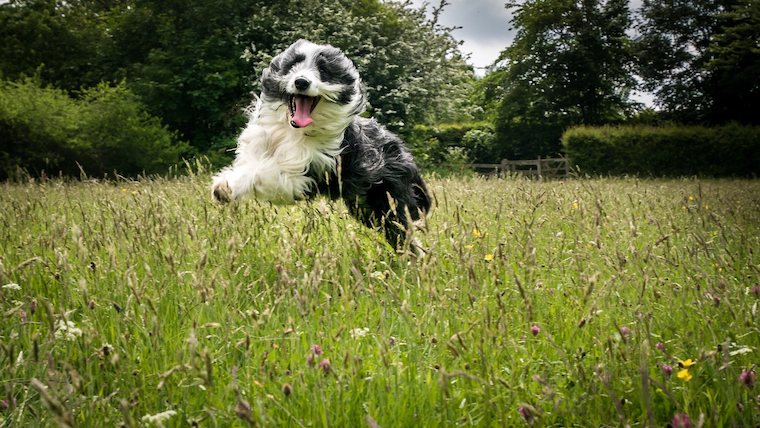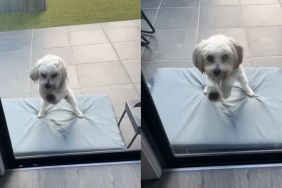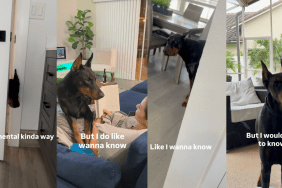
While having a reactive dog can feel isolating, there’s been increased attention on how common reactivity is as well as methods of helping reactive dogs. There was once a perception that a reactive dog meant their dog parent was a bad trainer or bad at taking care of them. Now, it’s clear that while this is sometimes the case, it’s more commonly the result of bad experiences early in life or simply genetics. While it may not be what every pet-parent hoped for, there are plenty of reactive dog training and activities to keep your pup happy and stimulated. They can even help your pup become more confident, socialized, and less reactive.
Still, having a reactive dog can be hard. Depending on whether your dog is reactive to people, dogs, objects, or a combination, taking them places most dogs can go can become very difficult. But there’s no reason your dog should go without exercise or fun experiences because of their reactivity.
Making Training Fun
Consistent training is one of the most important things you can do with a dog displaying any unwanted behavior. Reactive dogs especially need consistent training, or their progress may lapse. Keep training sessions from being boring by rotating rewards. If your dog is motivated by toys, buy a cheap pack of many toys so they can frequently receive a “new” one as a reward. Consider a new flavor of training treat if they’re more motivated by food. While it’s important to be careful of caloric intake, high-priority training sessions often pair well with high-value treats like small pieces of hotdog, which are often treasured more than a typical dog treat.
Bring the Dog Park to You
One of the best ways to let a dog burn their energy off is a sprint with some other pups at the dog park. However, this isn’t possible for many reactive dogs. For dog parents without a fenced-in yard, some good off-leash time becomes even more challenging. Sniffspot is a website where users can rent out their backyards to dog parents for as long as they choose. One to two-hour increments, rarely above $15 an hour, are common. There are also filters to determine what stimuli may be present. You can find a location where your dog is guaranteed to not see other dogs, people, or whatever they find triggering. While it might not be cost-effective to do this every day, it can be a great way to let your dog burn off some energy in a safe environment.
Just practice good etiquette. Clean up after yourself and your pup, and if you have worries about your dog’s reactivity, contact the homeowner before renting.
Set Up Indoor Fun
Many dogs thrive with activities like dog sports. However, other people and dogs are of course common at these events. Bringing a reactive dog out to burn some energy can be complicated. Consider purchasing an indoor agility set for home use. These sets can either be used in a backyard or within the home. While it might not be as high-stakes as a real competition, this activity still keeps your dog’s mind and body active. Additionally, in recent years indoor play spaces, like gyms for dogs, have become more common. They’re often meant for group settings. However, if you have a pup play spot in your community, contact them to see if they do private reservations.
For dogs who aren’t as athletic, indoor fun is still possible. Basic foraging activities, like Kong-type toys or snuffle mats, can keep dogs engaged and use their brains. For more advanced puzzle solvers, try more intense toys like Nina Ottoson’s.
Finding Secluded Spaces
Of course, reactive dogs still need time to walk. But active, dog-friendly trails can be frustrating and scary. Before taking your pup anywhere, be sure you’re confidently and safely handling them. Tools like the Gentle Leader or a harness can help your dog stop lunging, in combination with training. For dogs who may be a bite risk, consider muzzle training. Muzzles seem scary to some, but when properly worn, they don’t harm dogs. Basket muzzles are designed so pups can still play, drink, and accept treats.
To find a fun and safe place to walk your dog, you may need to get creative. Ask owners of large properties if it’s acceptable to walk your dog there (with permission). Walk at night or in the early morning. During these hours, less people and dogs are out and about. You may have to seek out the least popular walking spots in your area to try to get them to yourself.
Reactivity Doesn’t Equal No Fun
It’s important to remember that while a reactive dog may not give you the “typical” dog experience, that doesn’t mean you can’t have fun together. Your dog doesn’t know they’re missing anything — they just know they have fun doing things with you. While reactivity can be frustrating, it doesn’t mean your dog’s quality of life (or yours) has to be impeded.









